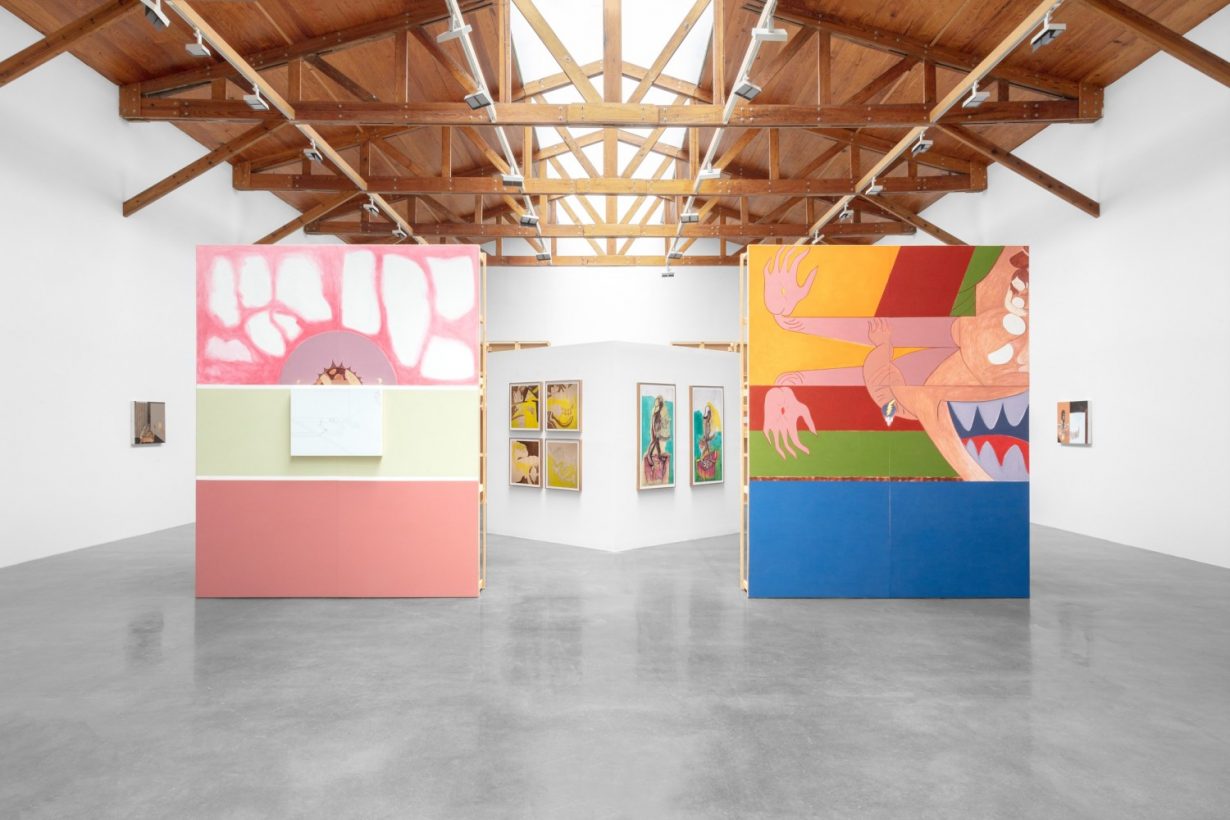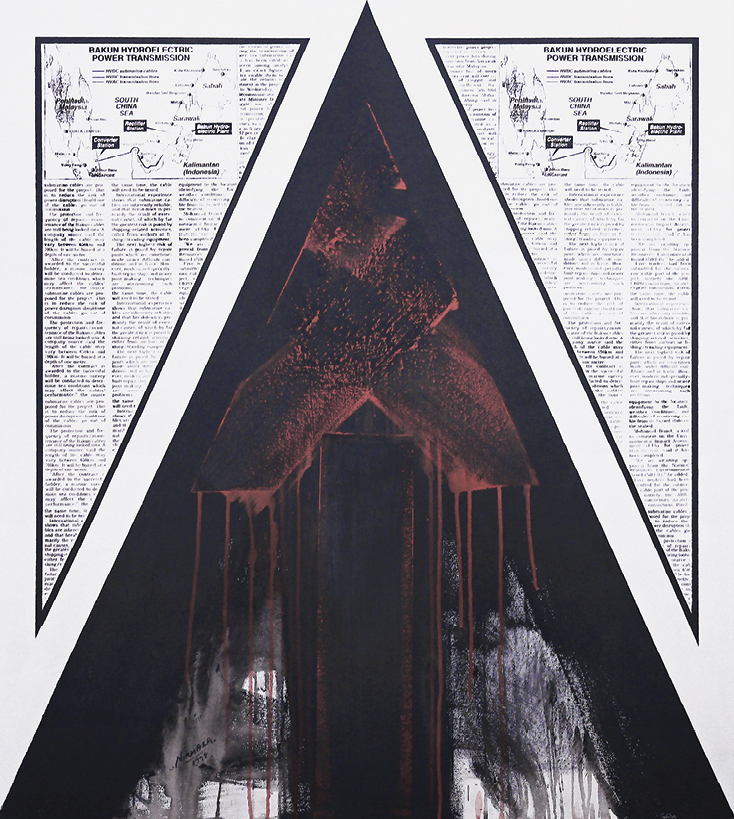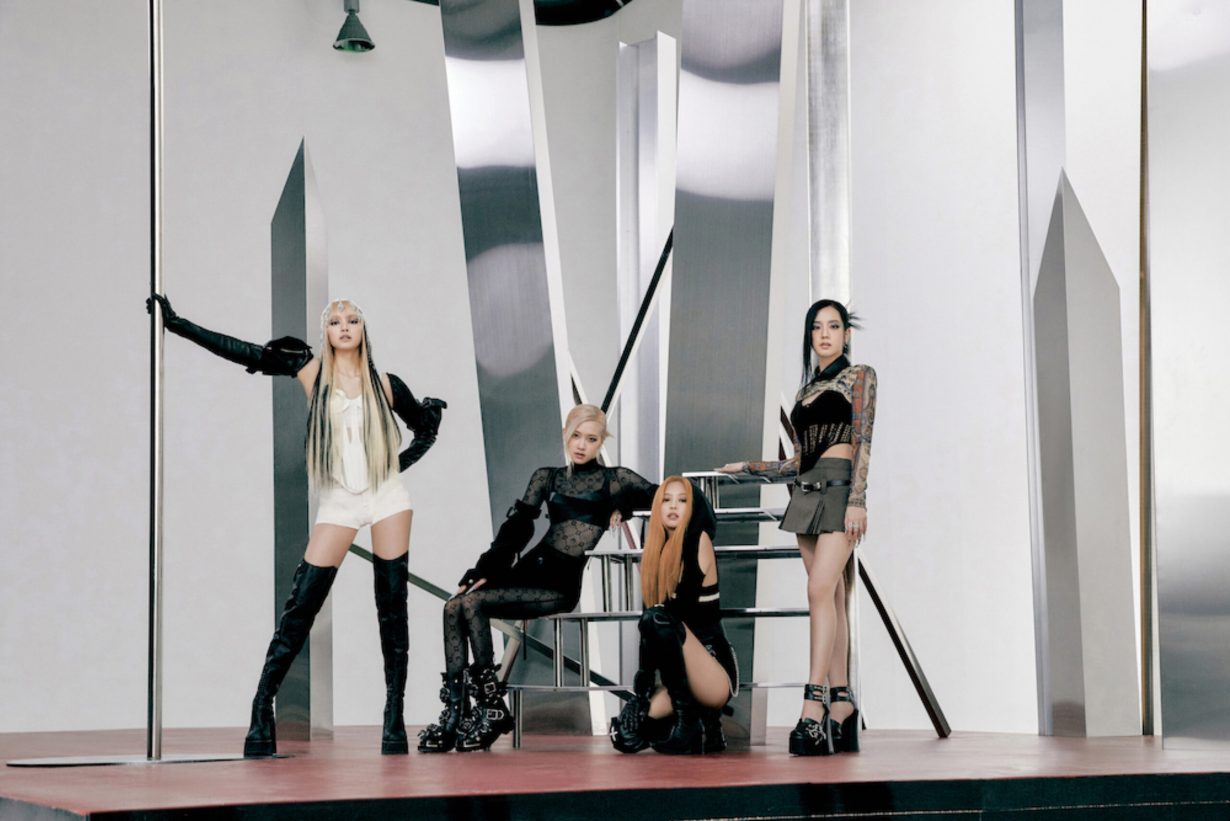From blood and guts to the ancient principles of the I Ching, our editors on what they’re looking forward to this month

Mire Lee: Black Sun
New Museum, New York, through 17 September
One of the things about art is that it allows you to explore some pretty dark fantasies in a ‘socially acceptable’ manner. (I guess ol’ Hermann Nitsch might have felt the same way.) I’ll let you in on a secret: sometimes I like to imagine what people’s insides would look like on their outsides. So when I saw Mire Lee’s Endless House: Holes and Drips (2022) at last year’s Venice Biennale, I saw a physical recreation of what I occasionally see in my mind, but on a master scale: strips of flesh strung up on scaffolding, wet entrails wriggling about like mutilated worms, bodies eviscerated beyond recognition. A reminder that humans are just meatbags that can be ripped open as easily as those parcels of offal stuffed into the cavity of a turkey carcass. It was glorious and sickening, even if, in the end, the pulpy writhing mass was just made of rubber tubing, rope, ceramic and liquids. I take philosopher Julia Kristeva’s point about sadness/depression being the last wall of defence against hatred towards a lost ‘Thing’ (object, person, situation) – which she touches on in her 1987 exploration of melancholia, Black Sun; but sometimes psychological sublimation doesn’t quite cut it, and you just need to see some guts (even fake) spread out before you. I don’t doubt that Lee will deliver in this respect at New Museum, where her latest commission takes its cue from the ideas explored in Kristeva’s book. Fi Churchman

Daniel Guzmán: The man who should be dead
Kurimanzutto, Mexico City, through 28 July
Have you ever played the collaborative game of ‘exquisite corpse’, in which multiple participants draw blindly and intuitively on a folded paper to finally reveal a collective body of head, torso and legs? The strange coincidence and surprising connections of this game, which was first dreamt up by the Surrealists, are conjured in the latest exhibition by Daniel Guzmán at Kurimanzutto, Mexico City. He offers up a trippy series of large and small-scale drawings, where bodies fly through the air before being truncated by bold blocks of colour while strange faces leer and grin. Guzmán’s latest body of work represents his recent immersion into drawing, a new avenue of research begun in 2017, focusing on the mark-making potential of pen and paint upon diminutive paper and loud, large wooden structures. A punkish, scrapbook sensibility has long infused his work, which frequently draws from sources as disparate as newspaper articles, plastic bags found in the local streets of his hometown of Mexico City, rock’n’roll record covers, pulp novels and film stills. When sketching out these drawings, Guzmán chose to follow the principles of the I Ching, the ancient Chinese divination text which offers a tool for interpreting the spiritual guidance of the universe through a game of chance. The many twists and turns of this otherwise invisible roadmap are evident in the abrupt starts and stops of these varied visual narratives, reflective of the many contradictions that we each hold buried within ourselves. Louise Benson

AMALIA PICA: ¡QUE VIVA EL PAPELEO!
Fundación Jumex Arte Contemporáneo, Ciudad de Mexico, 26 July – 8 October
One would think that as a print magazine, ArtReview would have loads of loose paper with glaring red marks flying about – delete! Comma! EN-dash! ArtReview doesn’t, however; we’ve gone digital like the rest of the world, tracking changes and adding comments in temperamental Word documents. We do, however, still saunter down to the office every day and stare awkwardly at one another in that old-school way of working. Amalia Pica’s latest exhibition, ¡Que viva el papeleo! (Long Live Paperwork!), playfully intervenes in the mundanity of office culture (not that the ArtReview office is boring, obviously), highlighting the possibilities of silliness which make enduring corporate bureaucracy bearable. To enter the exhibition, the viewer must fill out an ‘absurd questionnaire’. Why, I hear you ask? Why not! Pica responds, echoing power hungry administrators everywhere. Visitors must then find their way through a maze of cubicles and stacks of paper in a simulated, deadline-induced hysteria. Put into the museum space, ¡Que viva el papeleo! acknowledges, a la Marx, the absurdity of work, but also hints that we should probably try to have some fun along the way. Marv Recinto
Herzog & de Meuron
Royal Academy of Arts, London, 14 July – 15 October
What their hometown art fair (the venue for which was renovated and extended by the duo in 2013) has done for the artmarket, architects Herzog & de Meuron have, over nearly half a century of practice done for the field of architecture: expanded it. If some of their early, minimalist work sometimes seemed far from glamorous (in 1999, creating a twisted copper cuboid to house a railway signal box by the tracks in Basel) it nevertheless set blueprints for how the firm would go on continually to make the ordinary extraordinary while leaving space for a total fetishisation of materials along the way. In later years iconic structures followed: Tate Modern (2000), the ‘bird’s nest’ Beijing National Stadium (2008; with Ai Weiwei); the Schaulager, an open-storage warehouse-cum-exhibition space in Newmünchenstein (2003); through to Hong Kong’s M+ museum (2021). Now instead of making galleries, they’re in one at London’s Royal Academy. Architect + exhibition = yawn? Think again. Sometimes one plus one doesn’t equal two. Yes, there are photographs of buildings, models of buildings, plans of buildings… but there is also a sensitively developed approach to aesthetics, materials and form. Not to mention collaborations with the aforementioned Ai, German photographer Thomas Ruff, conceptual artist Michael Craig-Martin and Swiss painter Rémy Zaugg, among many others. And Herzog & de Meuron remain the only architects ever to have had a show at Tate Modern. So, you’ll be in safe hands. They know what they’re doing. Nirmala Devi

Afire, dir. Christian Petzold, US limited release 14 July
An art school student scouring the north-German forests and beaches for final-exhibition inspiration. A unpublished but serious novelist turning down fun to stay in and stare at his laptop, to actively not-write. A surprise guest already staying in the holiday home they both share, whose midnight activities are extensive (and leave the local lifeguard retreating into the night, naked, clothes balled up against his chest). Relax: I’m not talking about your exes; they’re just characters in Afire, a new film by German director Christian Petzold. After the film debuted at Berlin Film Festival, some reviewers seemed baffled by its tone – as was I – mistaking its bitterness and absurdity for disordered writing. Marketed as a sunny multiplex flick, Afire has a rotting core: as the story plays out, Petzold unfurls a view of life that is uncomfortable, insecure and truly unknowable. Though maybe you’d like to see more of the dishy lifeguard fleeing the premises. Alexander Leissle

Home Sweet Home
The National Museum of Art, Osaka, through 10 September
Home is a slippery concept that has long troubled artists in an age of mass migration, with the effect of numbing its various strands – displacement, belonging, family – until they are rendered almost monotonous by repetition. It is refreshing, then, that this new group exhibition on what we call ‘home’ takes place in Japan, a country that for centuries maintained an official policy of isolation from Europe and its colonies, turning inwards and away from the world outside. The exhibition features a mix of Japanese and international artists, including Lydia Ourahmane, Kei Takemura and Maria Farrar, with works ranging from architectural evocations of half-built homes to sound installations and large-scale paintings. Many of these point to the fraught role of food in conjuring a sense of familiarity and comfort, as well as its inherent connection to national identity. Ishu Han’s 2-channel video, Making Tofu at a Place That Is Not Home (2023), takes its cue from a Chu Opera that tells the story of a husband and wife’s quarrel over soy beans. Buttery boulangerie goods abound in the paintings of Maria Farrar, which reflect her own mixed Anglo-Japanese upbringing. Her street scenes and shopfront evoke the shifting associations we have with food and how this can be an indication of the changing balance of global power, with French croissants being adopted in earnest in cities such as Tokyo and Seoul. It is a question of taste that is nodded to in the title of the exhibition, Home Sweet Home, asking who really defines what we consider sweet and who is permitted to take the first bite. Louise Benson

Les Rencontres d’Arles, 3 July – 27 August
Nothing says the start of summer to us photo freaks more than the smell of fresh ink prints, the flurry of photobook announcements and the two-week runup to Les Rencontres de la Photographie during which time non-French speakers frantically practise saying “Arrrles” with the proper uvular ‘R’ sound at their sighing, eye-rolling Toulousaine friends. (Sorry, Marrrie.) I’ll get to the point. I’m especially looking forward to three exhibitions around town next week: Peruvian photographer Roberto Huarcaya, who sees himself as a ‘mediator’ rather than ‘creator’, has been busy ‘wrapping thirty-meter rolls of photographic paper around trees and shrubs at night’, then processing these in river water (allowing the paper to collect its impurities), and will be showcasing three series of photograms at Croisière; Soumya Sankar Bose presents A Discreet Exit through the Darkness at Église des Frères Prêcheurs – a part-fictional, part-collective-memory led investigation into the three-year period during which his mother had been kidnapped, and on whose rescue, suffering from prosopagnosia, was unable to identify her kidnappers; at the same venue, Hien Hoang’s Across the Ocean interrogates the ‘stereotyping East Asian cultures by Western society’ via photos that combine images of food with the body parts of Asian women (a piece of raw salmon fillet overlaid with a set of human eyes, a pair of chopsticks delicately picking up a single human tongue), and which reveal the relationships between and conflations of fetishisation, commodity and consumption. These are just a few of the many exhibitions around town, but there’s also a photobook fair, book awards and of course the announcement of the shortlisted artists for this year’s Prix Pictet (which comes in at roughly £88,000). I just hope I pronounce jambon-buerrre right. Fi Churchman

Nirmala Dutt: Statements
Ilham Gallery, Kuala Lumpur, 18 July – 24 December
At a time when Malaysian art favoured pure aesthetics and national politics made antidemocratic shifts towards privileging the Malaysian elite, Nirmala Dutt stood firm in her challenge of power. Her early mixed-media works she titled ‘Statements’ were such declarations of dissent, pulling found material from newspaper clippings, photography, and even trash to articulate the truth of social injustice and war atrocities. This exhibition, in title and theme, highlights Dutt’s early-established critical messages of feminism, ecocriticism and global conflict. A pioneering figure in Malaysian art, Dutt remained unapologetically political throughout her life. Upon the artist’s death in 2016, Yee I-Lann wrote, ‘Nirmala Dutt is one of Malaysia’s finest contemporary artists, more brutal than her male peers, opinionated, confident, brave and fearless. She’s an art and a woman hero and if you don’t know her art, you don’t know Malaysian contemporary art.’ Marv Recinto

Walking Through the Darkness
Centre for Contemporary Photography, Melbourne, 21 July – 10 September
Dear Todd Hido, if by chance you’re reading this, I fucking love your photographs. (A tutor at Nottingham, who I think you know, introduced House Hunting to me. One day I’ll buy a first edition. Maybe even a print.) Hido isn’t the only reason the international group exhibition Walking Through the Darkness is on here – though obviously his name instantly became a blip on my internal radar that’s permanently scanning for my biased favs. The other reason is because I find the function of light in the process of photography completely fascinating. Whether digital or analogue, that specific quality of light in that exact moment is captured. And when it comes to photographing in the dark? Well, that’s a whole other mind-blowing, time-walking experience: seconds – minutes – of time stored in a single image. Then, of course, there’s also the metaphorical aspect of Walking Through the Darkness, which presents the works of artists whose work looks at how photography might ‘act as a witness, record new landscapes and impressions, remember, resist censorship, and draw attention to forgotten or suppressed histories’. Alongside Hido, some of the participating artists here include: Rushdi Anwar, Ori Gersht, Rinko Kawauchi, Fassih Keiso, Morganna Magee and Vanessa Winship. Fi Churchman

BLACKPINK at Stade de France, 15 July
Ah… August 2016. That’s when life began. And Blackpink released their debut Square One. The two are not unrelated. In case you haven’t got it. I instantly liked ‘Boombayah’. The opening notes, which sound like one of the girls is stepping on a series of live frogs, croak out rhythmically. Then Blackpink promise that they are ‘in your area!’ In the promotional video, however, they don’t seem to be anyway, just driving through a place that doesn’t look like my area (on scooters with wooden boomboxes racked to the back to symbolise the exquisite traditional-yet-modern craftsmanship of Korea in general and their songs in particular). In any case, the fact that we can see that they are driving to somewhere, but they keep telling us they are somewhere is a little confusing. But that’s K-pop for you. Ever since I heard that song I kept looking out the window. Ready to show them my driveway. They never made it. In the video, suddenly the scooters were abandoned and they were dancing around in some sort of tearoom telling me how hot they were. Pangpangpang! It’s all so titillating. That’s the day I was ‘born pink’. As you’ll have gathered at this point, the thing that makes Blackpink so great is not their catchy tunes but the fact that you don’t have to think when you listen to them. There’s no point. And boy, do people love that. In fact, since I was born pink, many other people seem to have jumped onto the bandwagon. Now Blackpink are both making and breaking records and stuff. Which is a bit annoying, because once they were mine. But this month they are in my area. Paris. 15 July. Stade de France. I don’t live in France, but I’m already here. With my official plush cover lightstick (with bunny ears), sipping tea from my The Virtual thermos, and about to put on my ‘How you like that’ facemask. Waiting… I like Jennie the best since you ask. She’s the rapper. Nirmala Devi
